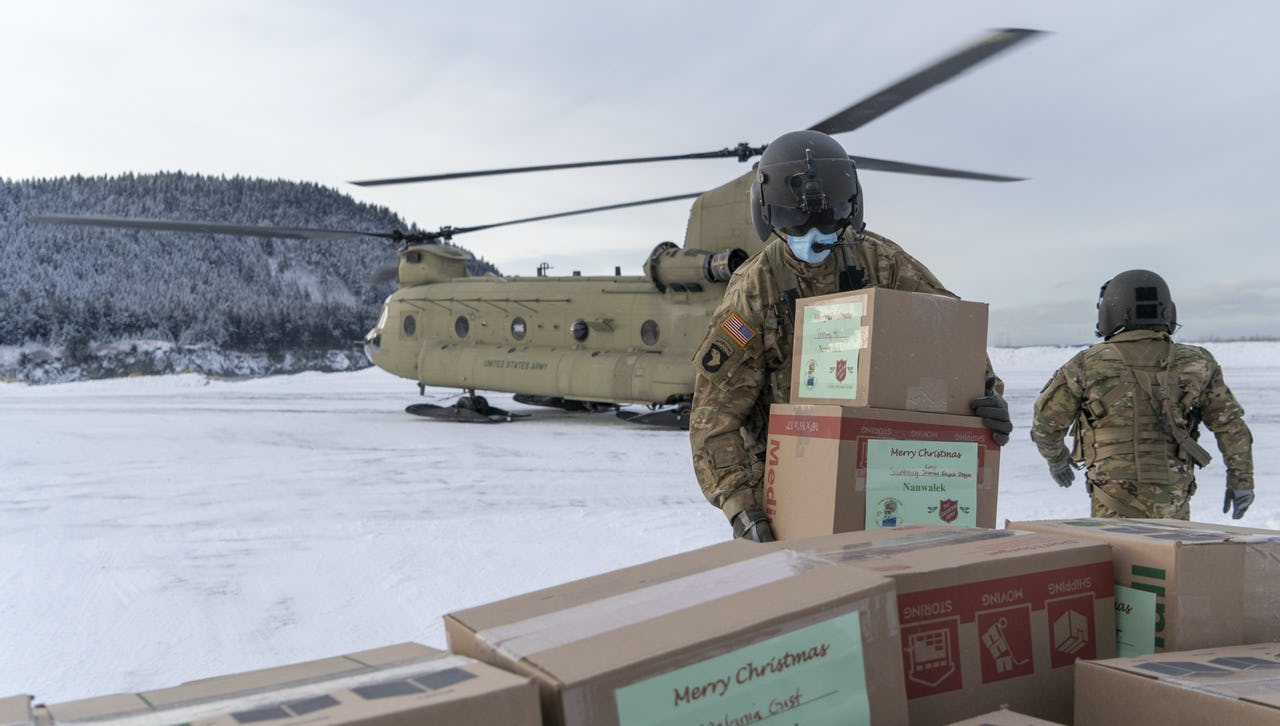COVID-19 in the Arctic – Infographic

Soldiers from the Alaska Army National Guard unloading gifts in Nanwalek, Alaska, during Operation Santa Claus. Photo: The National Guard
After originating in Wuhan, China, in late 2019, COVID-19 became a worldwide pandemic. Cases quickly spread to Arctic nations and containment measures were enacted by both small communities and state governments. Some of the responses in the Arctic can be considered best practices and helped to limit the spread from the beginning, which is reflected in the region’s low death rate at that time. These effective preventative measures were especially critical for remote Arctic communities with limited access to healthcare and other necessary resources, but they remain highly vulnerable to the pandemic’s secondary effects.
This infographic designed by Yiren Wang traces the development of COVID-19 cases and measures to halt the spread in the Arctic from January to August 2020. It illustrates some of the effective policy and community responses, as well as the virus’ effect on economic and cultural sectors. The infographic further looks at the threats of COVID-19 for Indigenous communities and the Arctic Council’s recommendations for reducing the impact of further waves of the pandemic and other infectious diseases. A list of sources used for this infographic can be downloaded here.
For more information about COVID in the Arctic, check out The Arctic Institute’s COVID-19 series, which offers an interesting compilation of best practices, challenges and diverse approaches to the pandemic applied by various Arctic states, regions, and communities.